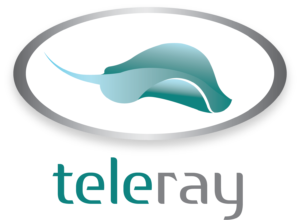The digital age offers new and better healthcare options for providers and their patients, but it also creates risk for the security and privacy of protected health information (PHI). The 1996 Health Insurance Portability and Accountability Act (HIPAA) established regulations for the proper maintenance, sharing, and storage of PHI. How does HIPAA apply in an increasingly digital healthcare environment? What are its implications for telehealth, data sharing, messaging platforms, and other technologies? And how can providers and their business associates ensure compliance while keeping up with the times?
Digital healthcare and HIPAA
Digital healthcare made its first appearance in the early 1990s, when the first healthcare records were digitized to allow easier data access and collaboration, as well as to eliminate data silos. The healthcare industry was slow to embrace the change, but current events forced the issue. The pandemic led to a surge in adoption of digital technologies, such as telehealth and wearable health devices, as well as a significant increase in data.
Alongside these technologies came new security and privacy concerns. Care providers turned to virtual meeting technologies such as Zoom, Skype, and FaceTime to offer continued care when face-to-face interactions were limited. These platforms provide a health engagement channel, but lack more stringent security features, which could put providers and their patients at risk of privacy and security breaches. Also, remote healthcare workers logged in to health networks from unsecured devices and discussed patient information via email and text message. Stored PHI was at risk, as evidenced by the many high-profile data breaches that occurred.
HIPAA compliance has become a leading concern for medical facilities, providers, insurers, and business associates (BAs) of companies that handle patient data. With all these entities involved, it can be difficult to ensure you remain compliant, and the ramifications of noncompliance can be severe.

HIPAA 101
HIPAA was enacted to protect the health information that covered entities (CEs) and their business associates create, maintain, receive, and transmit. CEs are defined as health plans, healthcare clearinghouses, and all healthcare providers that transmit health information in electronic form. BAs are companies that engage with CEs to help carry out healthcare activities.
HIPAA has three components:
- The Privacy Rule, which establishes standards for the protection of health information
- The Security Rule, which operationalizes the Privacy Rule by outlining the safeguards CEs must put in place to secure PHI
- The Breach Notification Rule, which outlines the actions CEs and BAs need to take after a breach occurs, including notifying the people whose data was compromised and resolving the security breach
But when you delve deeper into HIPAA and compliance concerns, there’s much more CEs and their BAs need to consider. In addition to establishing privacy guidelines and taking measures to ensure the privacy of PHI, CEs must have methods to determine:
- Who is accessing patient information
- What patient information the person is reviewing
- What they are doing with it
This information will enable CEs to enact appropriate restrictions.
HIPAA requires CEs to work only with BAs who ensure protection of PHI. Therefore, CEs and BAs should enter into business associate agreements (BAAs) that include requirements and measures that CEs and BAs need to take to ensure HIPAA compliance. As part of those requirements, CEs and BAs need to keep audit logs and audit trails of system, application, and user activity to mitigate security risks and detect and resolve data breaches. If a BA violates a BAA, the CE must resolve the breach or terminate the BAA.

HIPAA violations can result in penalties for both CEs and BAs. Some examples of HIPAA violations you should be on the lookout for include:
- Sharing protected information with a patient’s family without written consent
- Failing to properly dispose of patient records
- Posting medical facility photos, in which patients are identifiable, on social media
- Discussing a patient where PHI might be overheard
The U.S. Department of Health and Human Services is responsible for enforcing the HIPAA Privacy and Security Rules. Criminal violations are handled by the Department of Justice. Consequences of noncompliance or data breaches can range from significant monetary penalties to criminal prosecution and prison time.
Carefree HIPAA compliance
HIPAA compliance is essential but can be quite complex to master. With a partner like TeleRay, you can rest assured that your team has the right technology and expertise in your corner to remain in compliance. TeleRay’s cutting-edge telehealth and communication platform is HIPAA-compliant and provides secure cloud storage and transmission of PHI and diagnostic imagery, including DICOM images.
The easy-to-implement platform allows face-to-face communication between patients and medical providers at all levels. The platform also provides display capabilities for reports and radiologic imagery that presents a more holistic view of a patient’s health.
With the TeleRay platform taking care of all your telehealth, medical communications, and data storage, your HIPAA compliance can truly be carefree. To learn more, visit TeleRay.com.

